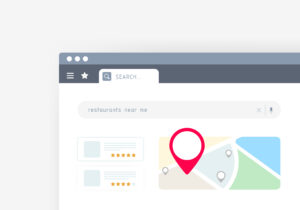Cost per Click is the fee you pay Google or another search engine when someone clicks on your ad. Clicks are a love-hate relationship for advertisers. Conversions cannot occur unless your ads are clicked on. However, clicks can quickly deplete your ad budget if you’re not careful. As a result, every advertiser wishes to lower their cost per click (CPC). After all, the lower your advertising costs, the greater your return on investment (ROAS). Here are some effective techniques for lowering your cost per click!

Understand negative keywords
To improve your relevance and raise your quality score, avoid appearing in irrelevant searches at all costs. That is precisely the purpose of negative keywords. Before you run your ads, use a keyword research tool, such as Google Ads Keyword Planner, to create a list of any keywords that contain or are closely related to your target keywords but aren’t relevant to your ads.
Once ads begin running, it is essential to monitor the search terms that people used to see and even click on your ads. Words or phrases that caused irrelevant clicks should be added to your negative keywords. Manage your negative keyword list as proactively as possible to avoid having your ads appear in irrelevant searches. When your ads appear for more relevant searches, you’re more likely to get a higher click-through rate, which helps your quality score.
Include Long Tail Keywords
Long tail keywords are those with a low search volume but a clearly defined search intent. The more generic a keyword, the more people bid on it; thus, the higher the bid. Elsewhere, long tail keywords, on the other hand, are specific keywords with low search volume, which means they are not prone to irrelevant search queries and thus do not waste your ad spend. Long Tail Keywords have a higher quality score, and having a higher quality score is the most effective way to reduce CPC.
Use Geotargeting

Geotargeted advertising allows you to focus on targeting your audience within a specific location. This location can be specified as where you want your ads to appear for each campaign. There are numerous targeting locations. You can target the entire country, a city, a region, a postal code, or a radius around a location. Geotargeting has the potential to elevate your campaigns to new heights. Geotargeting is the most effective tactic for marketers to target specific searchers with a PPC campaign. Marketers with a physical presence in a city, metropolitan area, or state can benefit from targeting PPC campaigns to a group of searchers within that city, metropolitan area, or state. If you use Geotargeting, your ads will only appear in areas where your potential customers live or show interest (depending on your ad selections). This increases your CTR, eventually improving your Quality Score and lowering your Cost Per Click.
Utilize Ad Scheduling
Another feature of PPC advertising is ad scheduling. It’s an often-overlooked area with a lot of potential to help you save money on advertising. It allows the advertiser to run the ad on particular days and times of the day. Displaying your ads can always be costly for any business and will certainly reduce your ROI if you are familiar with the best day or time your customers respond. You can plan your advertisements for that day or time. When you show your ads to your clients at a reasonable time, you will most likely convert them to potential leads or customers. Scheduling reduces the possibility of receiving irrelevant clicks, resulting in a lower CPC. Ad scheduling can also help you save money on advertising by preventing your ads from being displayed at inconvenient times or days. As a result, irrelevant clicks are also avoided.
Concentrate on the Quality Score.
The quality score is an assessment of the relevance of your keywords, landing pages, and advertisements. It determines the position of your advertisements as well as how much you will pay for each click. When you create highly targeted ads that are more relevant to search queries, your CTR rises. Increased CTR results in a higher quality score, which raises your ad rank and lowers your CPC
Experiment with Various Average Ad Positions.
CPC is calculated using your competitor’s ad rank in the position below on a Search Engine Results page (SERP). Testing different ad positions and measuring the impact on clicks and conversions reduces your CPC. All other things being equal, ad position number two will have a lower CPC than position number one when metrics such as quality score are considered. If you A/B test your ad in position number two and find no discernible difference in clicks and conversions, you may not need to outbid a competitor who is placing above your ad!
Create Ad Groups with Tight Themes
The more relevant your keywords, ads, and landing pages are, the higher your quality score and, thus, the lower your CPC. Creating tightly themed ad groups is one way to achieve a high-quality score and a low CPC. You can organize your keywords and ad groups based on the products and services you sell and want to promote online. Create relevant keywords and select the best possible landing page for each ad group after separating the ad group for each type of product or service. Because you have now created tightly themed ad groups with highly relevant keywords, ads, and landing pages, Google will reward you with a high-quality score, lowering your CPC.
Final thoughts
When you can effectively lower your cost per click while maintaining visibility and clicks, you will see an increase in profitability and ROAS from your digital ad campaigns. Though there is no single way to accomplish this, by following the steps outlined above, you can continue to lower your costs and improve your campaign results.

